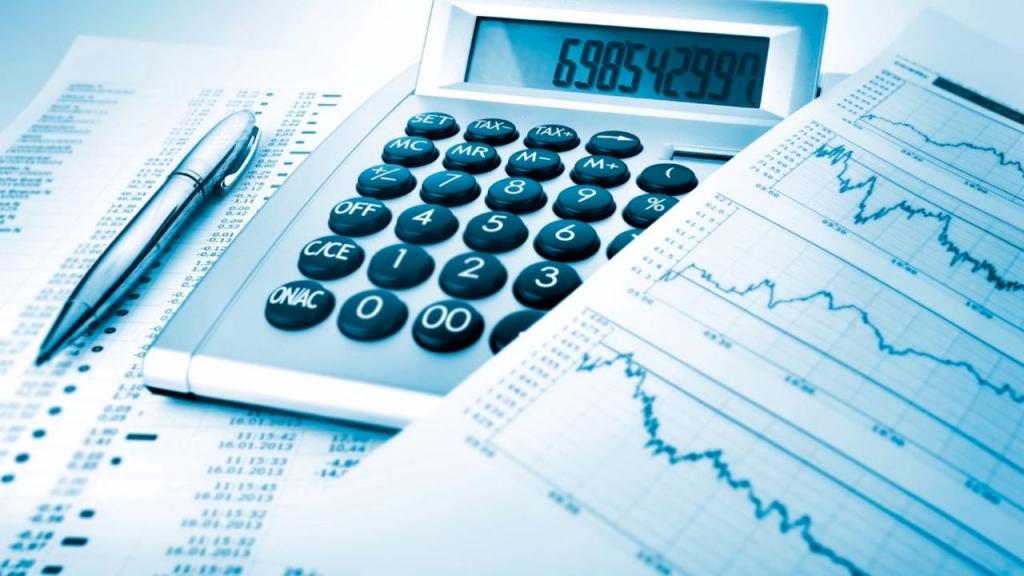In the criteria of a modern market economy, an increasing number of firms and enterprises open up different forms of ownership and different types of activities. Therefore, control over the implementation of all laws by these companies and tax regimes is being strengthened, as is the maintenance of accounting forms.
Consider the basic requirements for financial statements in the framework of this article.
Concept
Under the financial statements are usually understood organized information about the financial position of the company. It reflects the result of all activities of the company for the reporting period.
This information gives a complete picture of what kind of activity a company has, what its main and secondary types of activity, and what property is in its ownership.
Specialists are able to conclude about how profitable this enterprise is, even based on this information. The accounting report is maintained by all organizations. She always submits to the tax authorities.
It is not necessary to submit reports only for municipal companies that are on budget content.

Document Composition
Preparation of financial statements includes:
- balance;
- report on financial results;
- applications.
Balance sheet is a typical comparison of the assets and responsibilities of the organization. It reflects all assets, debts, the presence and valuation of intangible assets. Data are shown in ruble terms.
Assets and liabilities should be equal in their amount; for another, the report is considered to be drawn up incorrectly. It is necessary to check the completeness of all data in the accounting report, as well as their correctness. The correct calculation of indicators is checked by the accounting service and adjusted if necessary.
The appendices to the balance sheet in the financial statements are filled out only in those cases when you need to reflect the data that are required additionally. In addition, it is filled in to take into account the dynamics of the state of the accounting policy (explanatory note) in order to provide detailed and clearer information about their own work for financiers and owners (most often large organizations with large production sizes do this).

Key Accounting Requirements
The first two reports are mandatory, and the others: depending on the need for additional information that is not included in the first two reports.
One of the main conditions for reporting is the accuracy and completeness of representations. This requirement for financial statements will be met only if the statements do not contain data distortion, under-registration or complete change. Also, this condition indicates the need for the preparation of reports in serious coordination with all legal norms.
The next requirement for financial statements is neutrality. It involves the exclusion of the satisfaction of the interests of some user groups over others. Distorted data can lead to decisions that, of course, will be incorrect, since they are based on unrealistic data.
The requirement for financial statements on integrity implies the preparation of reports in the maximum amount of information about affiliated organizations, related parties.
Consistency assumes that the organization follows all the rules set forth in the accounting policies, all changes in which must be approved in a specific order.
Materiality - cannot be 100 percent reliable without displaying all the necessary data.The requirement for accounting information is very important. The question about what information is significant for this company is decided only by the manager.
Comparability. This means the need to compare current data with historical data. If the company has changed the form of data presentation, then this fact is certainly indicated in the explanatory note.
The requirement for financial statements - timeliness. This is any information must be reflected in the report on time. It is unrealistic to introduce a report for the first quarter on operations and data of the previous year. Also, temporary and final reports must be submitted to the tax authorities on time. This requirement is important for all company reports.
Discretion. The company will not be able to form reserves hidden. When the costs are planned, it is possible to overestimate the indicators on issues of marriage and risk in the workplace.
Consistency This means that these primary data are identical to the report data as a whole. And also, no differences in data are allowed in different types of reports for the same period.
Rationality. All accounting operations and their accounting should be carried out in proportion to the size of the products. The report does not need to reflect irrelevant data.
Uniformity. All reports must be completed in accordance with the usual unified forms that were established by the Ministry of Finance of Russia.
Constancy. Accounting and reporting imply continuity. It is unrealistic to delete data for a certain period. Also, especially for some items of income and expenses, it is necessary to draw conclusions and take all necessary measures to normalize or increase profitability and solvency.

The procedure for preparing financial statements
The ruble is set as the settlement currency. It is imperative to fill out the forms of established samples.
The Ministry of Finance of Russia has established details in the preparation of financial statements, which must certainly be reflected in the documents:
- report title as part of the report;
- reporting date;
- The name of the organization whose activities are the basis for the preparation of these statements. The name must be complete, abbreviations are not allowed;
- identification number acquired by the organization upon registration with the tax authority;
- OKVED;
- OPF and accessory code;
- unit;
- location address;
- dates of approval.
Corrections in documents and errors are not omitted. No matter what the adjustment, but it must be certified by the signature of the responsible manager and manager of the organization. Also, an adjustment date is required.
Regardless of the size and volume of production in companies, it is possible to conduct a study of its financial condition according to reports. Obviously, if accounting in this organization was carried out in accordance with all the above requirements and criteria, then in this case potential investors will have the opportunity to see reliable data and indicators of the company's business performance.
The tax authorities will not need to take constructive penalties for the organization.

Asset Balance Analysis Methodology
The methodology for the analysis of financial statements will be presented on a specific example of calculation.
The table presents a horizontal analysis of accounting statements by analyzing the asset balance sheet of the company Bauservice LLC.
| Balance sheet | 2015 year | 2016 year | 2017 year | Absolute deviation 2017/2015, i.e. | Growth rate 2017/2015,% |
| FIXED ASSETS | |||||
| Fixed assets | 126 | 49 | 15 | -111 | 11,9 |
| Deferred tax assets | 6 | 6 | 0 | -6 | 0,0 |
| TOTAL section 1 | 132 | 55 | 15 | -117 | 11,4 |
| CURRENT ASSETS | |||||
| Stocks | 201815 | 247484 | 208996 | 7181 | 103,6 |
| VAT | 6 | 94 | 232 | 226 | 3866,7 |
| Receivables | 204814 | 176152 | 462590 | 257776 | 225,9 |
| Financial investments | 4551 | 40860 | 40860 | 36309 | 897,8 |
| Cash | 18692 | 27733 | 21575 | 2883 | 115,4 |
| Other current assets | 1645 | 1150 | 82 | -1563 | 5,0 |
| TOTAL section 2 | 431523 | 493474 | 734336 | 302813 | 170,2 |
| BALANCE | 431655 | 493529 | 734351 | 302696 | 170,1 |
The analysis of the financial statements provides an opportunity to draw a conclusion about growth trends in the balance sheet of the company in 2017 compared to 2015 by 302696 tr or 70.1%, which is associated with an increase in the value of current assets by 302813 t.or 70.2% while reducing non-current assets in the amount of 117 T. or 11.4%. The decrease in non-current is mainly due to a decrease in the value of fixed assets by 117 tons. or 11.9%. The growth of current assets is associated mainly with the growth of receivables by 257,776 thousand rubles or 2.25 times, as well as an increase in financial investments by 36309 tons or 8.97 times.
A vertical analysis of the asset structure of a company's balance sheet is presented below.
| 2015 year | 2016 year | 2017 year | Share dynamics 2017/2015,% | |
| FIXED ASSETS | ||||
| Fixed assets | 0,029 | 0,010 | 0,002 | -0,027 |
| Deferred tax assets | 0,001 | 0,001 | 0,000 | -0,001 |
| TOTAL section 1 | 0,031 | 0,011 | 0,002 | -0,029 |
| CURRENT ASSETS | ||||
| Stocks | 46,754 | 50,146 | 28,460 | -18,294 |
| VAT | 0,001 | 0,019 | 0,032 | 0,030 |
| Receivables | 47,449 | 35,692 | 62,993 | 15,544 |
| Financial investments | 1,054 | 8,279 | 5,564 | 4,510 |
| Cash | 4,330 | 5,619 | 2,938 | -1,392 |
| Other current assets | 0,381 | 0,233 | 0,011 | -0,370 |
| TOTAL section 2 | 99,969 | 99,989 | 99,998 | 0,029 |
| BALANCE | 100,000 | 100,000 | 100,000 | 0,000 |
Analysis of the balance sheet gives us an idea that the share of current assets in the structure of the company's assets is maximum and amounts to almost 99%. The share of non-current assets ranges from 0.031% to 0.002% in the direction of decline by 0.029.

In the structure of current assets, the share of accounts receivable is maximum, and there is a noticeable tendency of its growth from 47.449% in 2015 to 62.993% in 2017. The growth in the share of receivables amounted to 15,544%. At the same time, there is a decrease in the share of reserves in the asset structure by 18.294%, the share of cash by 1.392%.
The technique of analysis of the liability of the balance sheet
The table below provides information on the horizontal analysis of the company's liability.
| Balance sheet | 2015, i.e. | 2016, i.e. | 2017, i.e. | Absolute deviation 2017/2015, i.e. | Growth rate 2017/2015,% |
| CAPITAL AND RESERVES | - | - | - | - | - |
| Registered capital | 10 | 10 | 10 | 0 | 100,0 |
| retained earnings | 11950 | 11996 | 12005 | 55 | 100,5 |
| TOTAL section 3 | 11960 | 12006 | 12015 | 55 | 100,5 |
| LONG TERM DUTIES | - | - | - | - | |
| SHORT-TERM LIABILITIES | |||||
| Short-term payables | 419695 | 481523 | 722336 | 302641 | 172,1 |
| TOTAL Section 5 | 419695 | 481523 | 722336 | 302641 | 172,1 |
| BALANCE | 431655 | 493529 | 734351 | 302696 | 170,1 |
These tables allow us to conclude that the dynamics of the balance sheet value was provided mainly due to the growth of short-term liabilities, namely accounts payable by 302,641 tr. or 72.1%. The increase in equity is negligible and amounted to 55 tons or 0.5%. Such a trend is negative for the company's liquidity.

The table below presents a vertical analysis of the company's liability side.
| Balance sheet | 2015 year,% | 2016 year,% | 2017 year,% | Share dynamics 2017/2015,% |
| CAPITAL AND RESERVES | ||||
| Registered capital | 0,002 | 0,002 | 0,001 | -0,001 |
| retained earnings | 2,768 | 2,431 | 1,635 | -1,134 |
| TOTAL section 3 | 2,771 | 2,433 | 1,636 | -1,135 |
| LONG TERM DUTIES | ||||
| SHORT-TERM LIABILITIES | ||||
| Short-term payables | 97,229 | 97,567 | 98,364 | 1,135 |
| TOTAL Section 5 | 97,229 | 97,567 | 98,364 | 1,135 |
| BALANCE | 100,000 | 100,000 | 100,000 | 0,000 |
The vertical analysis data in the table allow us to conclude that the share of short-term liabilities in the structure of the company's liabilities is maximum and amounts to 97.229% in 2015, 98.364% in 2017. There was an increase of this share by 1.135%, while the share of equity increased by 1.135%.
Positive trends in the balance sheet are:
- an increase in the value of the balance by 302696 tons or 70.1%.
The negative sides of the identified trends:
- the equity of the organization below 50%
- the growth rate of short-term liabilities (72.1%) exceeds the growth rate of equity (0.5%);
- the growth rates of accounts receivable (225.9%) and accounts payable (72.1%) are very different from each other.
Analysis of the report on financial results
The table below presents a horizontal analysis of the report on the financial results of the company.

| Article | 2015, i.e. | 2016, i.e. | 2017, i.e. | Absolute deviation 2017/2015, i.e. | Growth rate 2017/2015,% |
| Revenue | 2226412 | 2016219 | 2478402 | 251990 | 111,3 |
| Cost of sales | 2128541 | 1875808 | 2363431 | 234890 | 111,0 |
| Gross profit | 97871 | 140411 | 114971 | 17100 | 117,5 |
| Selling expenses | 88670 | 105774 | 135725 | 47055 | 153,1 |
| Sales profit | 9201 | 34637 | -20754 | -29955 | -225,6 |
| Other income | 215299 | 108292 | 126070 | -89229 | 58,6 |
| other expenses | 219263 | 142230 | 95199 | -124064 | 43,4 |
| Profit before tax | 5237 | 699 | 10117 | 4880 | 193,2 |
| Current income tax | 1103 | 652 | 2024 | 921 | 183,5 |
| including standing commitments | 477 | -665 | -667 | -1144 | -139,8 |
| Other | 421 | 0 | 0 | -421 | 0,0 |
| Net income (loss) | 3713 | 47 | 8093 | 4380 | 218,0 |
These tables allow us to conclude that the growth trends in revenue by 251,990 tons are positive. or 11.3%, gross profit of 17,100 tons or 17.5%, profit tax share of 4880 t. or 93.2%; net profit of 4380 tons or 218%. A negative trend is the fact that in 2017 the value of sales profit was negative and amounted to -20754 tons, while the decrease in the amount of profit from sales amounted to 29955 tons, which was due to a sharp increase in selling expenses in 2017 47055 t. or 53.7%.Selling expenses exceeded the amount of gross profit, which negatively affected the profit from sales. However, in general, the situation looks good, as indicators indicate growth trends in financial results.

The table below presents a vertical analysis of the report on the financial results of the company.
| Balance sheet | 2015 year,% | 2016 year,% | 2017 year,% | Share dynamics 2017/2015,% |
| Revenue | 100,00 | 100,00 | 100,00 | 0,00 |
| Cost of sales | 95,60 | 93,04 | 95,36 | -0,24 |
| Gross profit | 4,40 | 6,96 | 4,64 | 0,24 |
| Selling expenses | 3,98 | 5,25 | 5,48 | 1,49 |
| Sales profit | 0,41 | 1,72 | -0,84 | -1,25 |
| Other income | 9,67 | 5,37 | 5,09 | -4,58 |
| other expenses | 9,85 | 7,05 | 3,84 | -6,01 |
| Profit before tax | 0,24 | 0,03 | 0,41 | 0,17 |
| Current income tax | 0,05 | 0,03 | 0,08 | 0,03 |
| including standing commitments | 0,02 | -0,03 | -0,03 | -0,05 |
| Other | 0,02 | 0,00 | 0,00 | -0,02 |
| Net income (loss) | 0,17 | 0,00 | 0,33 | 0,16 |
The data in the table below indicate that in the structure of revenue the share of cost is very high and amounts to 95.6% in 2015, 95.36% in 2017. There was a slight decrease in its structure in 2017 by 0.24%, while the share of gross profit increased by 0.24%.
The company is also characterized by negative trends: an increase in the share of commercial expenses by 1.49%, a decrease in the share of profit from sales by 1.25%, a decrease in the share of other income by 4.58%. Positive trends are: an increase in the share of gross profit by 0.24%, a decrease in the share of other expenses by 6.01%, an increase in the share of net profit by 0.16%, an increase in the share of profit before tax by 0.17%.
Balance: general view
Balance sheet is an important document and organization reporting form.
The balance sheet is a tabular version of the reflection of the monetary characteristics of the organization at a specific date. In the most popular form in Russia, the balance consists of two equal parts, one of which indicates that the organization has in ruble terms (asset balance), and in the other, from what sources it is acquired (passive balance).
The basis of this equality is the reflection of property and obligations bilaterally in the accounts of accounting.
The balance sheet, which was drawn up on a specific date, allows you to evaluate the current financial condition of the organization and compare the balance sheet data compiled on various dates to track changes in its financial condition over time. Balance is one of the main documents that serve as a source of data for the financial study of the company.
Applied for official reporting in Russia, the balance sheet form is a table divided into two parts: balance of assets and obligations. The total assets and liabilities should be equal.
The balance of assets is a reflection of the property and obligations that are under the control of the company, are used in its work and can benefit it in the future.
The asset is divided into 2 sections:
- non-current assets (this section reflects property that has been used by the organization for a long time, the price of which is usually partially accounted for in the financial result);
- current assets (current), information about the presence of which are in constant dynamics. Accounting for their prices in the financial result is usually done at a time.
The liabilities side of the balance sheet characterizes the sources of these funds through which the asset balance is formed. It consists of three sections:
- capital and reserves that reflect the organization’s own funds;
- long-term responsibilities characterizing a company's debt that has existed for a long time;
- short-term obligations that reflect the rapidly changing part of the organization’s debt.

Statement of Financial Performance (OFI): General View
Being an extremely fundamental form of reporting, OFI provides users with reliable data on the financial condition of the company. It also reflects the results of the company for the reporting period. It allows the company to develop a more promising business strategy or make other necessary financial decisions.
The data of financial statements for the year are generated.
OFI as well as other forms of accounting, including balance, is formed for a calendar year.
The completion of the OFI is based on the rules dictated by the regulatory documents that govern its preparation.
Information is entered into the form in accordance with OKUD 0710002, which were approved by the order of the Ministry of Finance dated 06.04.2015 No. 57n. It records all information about the company's income and expenses, shows the results of work for the year, makes it possible to conduct an initial comparative analysis for each line of the report, since together with the data for this year, information for the last year is reflected in the form.
The legislation allows companies to add the necessary lines, if necessary, for example, according to the characteristics of production, but it is unrealistic to exclude existing ones from the form.
The report must be executed in Russian, units of measurement are thousands of rubles without decimal characters. But large organizations with huge turnover are allowed to work with units in millions of rubles.
Negative or decremented line values in the OFI are placed in parentheses for ease of calculation. The basis for filling the OFI is the information accumulated in the turnover balance for accounting accounts.
Verification of compliance with the law
The task of verifying the compliance of financial statements with legal requirements is to audit the implementation by an economic entity of the provisions of normative and other legislative acts, without which it is impossible to assess the accuracy of the financial statements of companies and organizations.
The audit of the organization and accounting of various control objects, which are carried out by auditors in accordance with the audit program, allows you to collect the necessary number of audit facts to assess the completeness, accuracy and correctness of the calculation of the characteristics of financial statements.
Starting to inspect the reporting and its compliance with the working rules, auditors should take into account that organizations have the right to form accounting forms independently. But it is necessary that they contain all the necessary data for reliable and complete disclosure of information on the financial condition of the company, changes in this provision and monetary indicators.
Before starting the audit of requirements for information in financial statements, the auditor should establish:
- whether the company’s staff provides the necessary accounting and taxation rules;
- internal documents that determine accounting policies, workflow diagrams, inventory schedules, etc .;
- whether measures are being taken to influence company personnel for violating the terms of legislative acts.
Common violations identified during the audit are: non-compliance of certain provisions of the accounting policy of the company with the requirements of the current legislation;
- the introduction of forms and methods of accounting for non-accounting policies;
- the introduction of different methods for evaluating accounting objects in temporary and annual reporting;
- lack of reporting on company segments;
- non-disclosure in the reports of significant information on the financial and monetary activities of the company for the reporting period.
